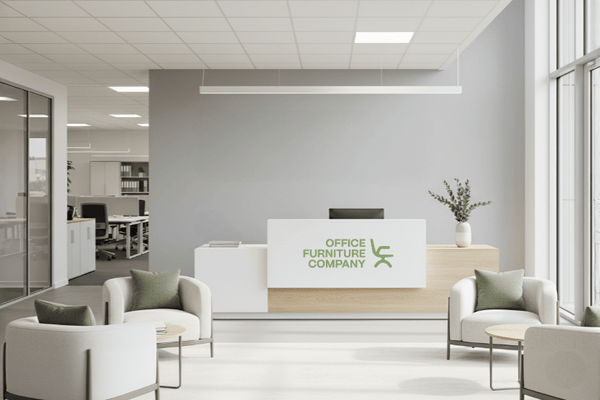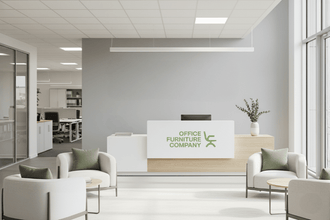
Relocating Office: A Complete Guide for Business Owners and Office Managers
Introduction to your Office Move
Relocating an office is a big job for any organisation. The thought of a fresh space can be exciting, but it also comes with plenty of moving parts. Without a clear plan, an office move can quickly disrupt day-to-day operations. An office relocation does not just involve desks and equipment, it touches almost every aspect of the business, from staff routines and client relationships through to budgets and long-term plans.
This guide sets out the practical steps required to plan and manage a smooth office relocation, from early preparation and budgeting through to the move itself and settling into your new space. While Office Furniture Company specialises in commercial furniture, we regularly support organisations through office moves and understand the common challenges. Most of the moves we see involve leased premises, so this guide takes that as the starting point. That said, many of the same principles still apply if you have purchased your own building, are moving out of a coworking space, or setting up your first dedicated office.
In most cases, businesses only start detailed planning once that new lease has been signed. Preparing earlier than that always helps, but once a fixed date is on the horizon planning for the office move becomes critical. Suppliers need to be engaged, staff need clear communication, and the logistics of shifting everything from one site to another come into focus. Handled well, moving office is more than a change of address. It is an opportunity to improve the way your workplace runs, give your team a refreshed environment, and create a space that supports productivity and growth.
Key Takeaways
Appoint a Leader: Assign a dedicated project lead to coordinate all tasks, from supplier communication to internal updates.
Audit Everything: Use the move as a chance to assess what furniture and equipment to keep, replace, or dispose of to create a more effective workspace.
Communicate Constantly: Develop a clear communication plan for staff, clients, and suppliers to prevent disruption and manage expectations.
Budget for the Unexpected: Create a detailed budget that includes a 10-15% contingency for unforeseen costs like extra make-good requirements or IT delays.
Phase 1: Planning Your Office Relocation
Appoint a Project Lead
The first stage of relocating an office is about setting solid foundations. Before boxes are packed or furniture decisions made, it helps to be clear on who is leading the project, what logistical factors might affect your office move, and how you will keep stakeholders informed along the way.
Appointing a project lead gives the move a clear point of coordination. In smaller businesses this may be the owner or office manager, while larger organisations might nominate someone specifically for the role. Their responsibility is not to complete every task, but to keep things on track, manage supplier communication, and make sure decisions do not stall.
Depending on the size and structure of your business, the project lead can delegate key areas. For example, different people can manage IT and technology, facilities and layout, or supplier coordination. What matters is that each role reports back clearly to the lead. Setting responsibilities early avoids bottlenecks and ensures nothing slips through the cracks.

Review Site & Lease Requirements
Before making other plans, check the requirements tied to both your current premises and the one you are moving into. Lease conditions often come with significant obligations, so if anything is unclear, it is worth seeking advice from your solicitor.
For your existing office, most Australian commercial leases include a make good clause that requires the space to be returned to its original condition. This may involve repainting, removing partitions or cabling, and arranging a professional clean. At your new premises, landlords may contribute to fit-out works or upgrades, or they may set limits on what you can change. Understanding both sets of obligations early gives you clarity. If you do not already have one, request a scaled floorplan from your new landlord. This will give you a blank map of the space, which is essential for finalising layouts and briefing suppliers later.
Confirming access arrangements at both sites is also key. Some buildings only allow moves after hours or require lift bookings and security supervision. Smaller sites may simply need keys, parking, or space for larger vehicles. Locking in these details early means you can brief suppliers properly and avoid last-minute issues.
Develop the Core Communications Plan
An office relocation impacts more than just the physical office. Clear and timely communication helps make the process smoother for everyone involved. Planning communication early ensures staff, clients, and suppliers know what to expect and when.
Start by listing who needs to be informed. Internally, staff want to know timelines, access arrangements, and what support will be available. Externally, clients, partners, and service providers need clear details on where and when you are moving so contact and deliveries continue without interruption. You can develop your own staff communication strategy to help manage the flow of information.
It also helps to prepare a checklist of every system, tool, and document where your old address appears. This could include your website, email signatures, invoicing templates, stationery, delivery portals, and supplier records. Capturing these early avoids missed updates that might cause confusion later. An important part of post-move optimising is checking that all these details are correct.
Remember to include your website and social media. Consistent updates across all channels build trust and help prevent confusion. Having a simple communication timeline mapped out now saves you from last-minute drafting later.
Phase 2: Investigating the Details of Moving Office
With the team and location guardrails in place, the next stage is about gathering the details you need to make good decisions. The aim here is to move from broad ideas to real numbers and action items by reviewing what you currently have and speaking with suppliers to get a clear picture of cost and logistics for the upcoming office move.
Audit Current Furniture & Equipment
An office relocation is a great chance to step back and decide what is worth taking with you. Walk through your workspace and review everything including furniture, equipment, files, supplies, and stored items. When moving office, it is not just about moving what you already own; it is also an opportunity to ask whether those items still work for your business.
Worn chairs, desks that no longer suit modern layouts, or storage that does not meet current needs can hold your team back in a new environment. Reviewing these now helps you decide what to keep, refurbish, or replace, so your new office is set up to support productivity from day one.
As part of this process, document your decisions carefully. Take photos and measurements of anything you plan to keep, and record the details in a simple spreadsheet. Track at least the item name, quantity, and importantly the dimensions. Using colour-coded stickers or labels can make the process faster and more visible. As you make your decisions, apply a sticker, for example, green for keep, red for replace, and blue for donate or dispose. This simple visual system keeps everyone aligned and ensures removalists only move what is actually needed on the day.
As part of the audit, consider the following factors when deciding what to keep, refurbish, or replace.
Condition and safety: Replace or refurbish anything that no longer meets workplace standards.
Ergonomics and comfort: Upgrade seating and workstations if current items cause discomfort or cannot be adjusted properly.
Fit for the new layout: Remove bulky or outdated items that will not work in a more efficient setup.
Modularity and reconfigurability: Keep systems furniture that adapts easily, replace obsolete or unsupported pieces.
Technology and cable management: Ensure workstations and breakout areas can support today’s devices with safe, tidy access to power and data.
Acoustics and privacy: Plan for upgrades if current items do not control noise or provide adequate separation as acoustic solutions have come a long way in recent years.
Brand and presentation: A consistent look across customer-facing areas such as reception and meeting rooms creates a professional impression; older items may need updating.
Lead times and parts: Older items outside of warranty or with limited access to parts may be more practical to replace than repair.
Cost to move versus cost to replace: Weigh the cost of moving bulky or outdated items against the benefits of investing in new furniture.

Engage Key Suppliers for Indicative Quotes & Information
Once you know what is moving and what is being replaced, it is time to reach out to the suppliers who will support the office relocating process and get an idea of costs and logistics. Some of the core services worth exploring include:
Removalists: Provide them with your inventory list, floorplans for both locations, and any access details such as stairs or lift bookings. Ask if they quote by the hour or provide a fixed price, and clarify what their insurance covers. Our guide to selecting a commercial removalist offers more advice.
IT and telecommunications providers: This is often the most complex area of an office move. Discuss your plan with your IT provider to get a clear cost for migrating servers, workstations, and phone systems. Clarify if you are simply transferring services or if a new connection is required, as this can significantly impact cost and lead times. Keep in mind that NBN or other internet services can take weeks or even months to connect, so lodging applications early is essential.
Commercial cleaners: Provide the floorplan and your make-good clause from your lease to get an accurate quote for bringing the old office back to the required standard.
Furniture suppliers: For any items marked for replacement during your audit, get quotes for new furniture. Be sure to ask about lead times, as this can impact your overall project timeline.
The more accurate information you share with suppliers early, the smoother the process will be. Be ready with move dates, staff numbers, floorplans, and access requirements such as lift bookings, parking, or after-hours rules. This helps suppliers give reliable quotes and reduces the risk of surprises later. Working with experienced suppliers who offer a installation and project service can also simplify the process.
When comparing suppliers, it helps to look beyond just the price on the quote. Service quality, speed of response, and flexibility bring a lot of value, especially as an office relocation is a chain of connected steps. If one supplier is slow or inflexible it can cause flow-on delays for everyone else.
It is also worth confirming the order of works. For example, IT contractors may need to complete cabling before desks are installed, or new furniture might need to be set up before existing items are delivered. Experienced suppliers can guide you on sequencing and point out things you may not have considered. Their input helps you avoid missteps and builds a more collaborative relationship from the start. Do not be afraid to ask for advice or guidance when you speak to them.
Furniture Placement and Floorplans
Once you have a clear picture of what will be moved and what will be replaced, and after speaking with suppliers about costs and options, the next step is to consider how everything will work together in the new space. Thoughtful placement supports productivity, enables focused work, and encourages collaboration when it is needed.
Start by using your inventory spreadsheet to map where each item will go, and triple-check measurements against the new floorplan to confirm everything fits, including any items still to be purchased. Making adjustments on paper is far easier than discovering issues once removalists arrive with a truckload of furniture. Free or low-cost floorplan tools can be helpful, but even simple graph paper and a ruler can provide a reliable draft.
If you are buying new office furniture, specialist suppliers such as Office Furniture Company can provide tailored advice and detailed floorplans that show how furniture will sit in the space. The right partner will help you plan spacing, walkways, storage, and acoustics, while also flagging potential challenges you may not have considered.
Phase 3: Budgeting and Planning Your Office Move
Create a Consolidated Budget
By this stage, you will have gathered the details and quotes you need. Phase 3 is about turning that information into a clear budget and a confirmed set of actions. The aim is to get approvals and give everyone a shared understanding of what will happen and when during this office move.
Start by creating a consolidated budget that captures every line item: removalists, cleaning, IT, new furniture, and any additional services. Allow for a contingency to cover unexpected costs such as extra cleaning hours, small building works, or access changes. A simple spreadsheet is usually enough, as long as it is complete, the spending is approved and it is regularly updated.
This is also the right stage to review insurance coverage. Confirm your building, contents, and business interruption policies are current and will apply during the move.
Build a Practical Project Plan
An office move project plan should be more than a checklist. It needs to set out the sequence of events between now and moving day, showing who is responsible for each task and how activities fit together.
The simplest way to approach this is to start with the confirmed move date and work backwards. From there, map out what needs to happen week by week, factoring in any supplier lead times and task dependencies. For example, IT cabling must be completed before desks are installed, and removalists can only start once staff have packed personal items.
Every office relocation is different, so there is no single formula for how a plan should look. A practical plan usually includes:
- Key dates such as lease end, access to the new site, and the confirmed move window.
- Task ownership, with clear responsibility assigned for IT, facilities, supplier coordination, and staff communication.
- Dependencies between tasks so you can see what needs to be finished before the next stage begins.
- Milestones to track progress and check whether the project is on schedule.
There are plenty of tools available, but the format matters less than the clarity. A spreadsheet, task board, or simple project management tool will work as long as it is kept current and accessible to everyone involved.
To minimise downtime, consider short-term strategies such as allowing staff to work from home, staggering team moves, or arranging backup internet connections so the business keeps running even if everything is not set up on day one.
Finally, refer back to your original communications plan. Share this tactical project plan with anyone who needs visibility, whether that is staff, suppliers, or external stakeholders, so everyone stays aligned and informed.

Phase 4: Packing and Preparation for the Office Move
With plans locked in and suppliers confirmed, the focus turns to execution. Phase 4 is where the process of relocating the office becomes real. Staff begin packing, suppliers arrive on site, and the logistics plan is put into action. The aim is to keep the transition safe, efficient, and as stress free as possible.
Packing and Staff Preparation
Keeping things organised starts with clear guidance for staff. Let them know what they need to pack, how items should be labelled, and when packing must be complete. Personal items are usually handled by staff, while shared equipment and files should have a nominated owner. Providing boxes, labels, and tape well in advance helps avoid last minute confusion.
For IT, coordinate closely with your provider. Computers, phones, and network equipment need careful handling to avoid downtime. Confirm who is responsible for packing and reinstalling each component, and make sure backup systems are in place before anything is disconnected.
Moving Day Management
On moving day, the project lead should be on site to answer questions, direct suppliers, and resolve issues quickly. Their phone will be in constant use, so they should carry a spare power bank and make sure all key people have their mobile number. Share the project plan, supplier details, and access instructions with those who need them, so the move stays on track. For staff not directly involved, set clear times for when they can attend the old or new site, to avoid unnecessary congestion.
Health and safety should also be front of mind. Moving heavy items, working around cabling, and accessing loading docks all carry risks. Make sure suppliers follow safe practices, staff understand their responsibilities, and emergency contacts are easy to access.

Final Checks and Handover
Make a list and take photos of things that are incomplete or have not been executed properly. Share the information with the appropriate responsible person, along with clear instructions around expected resolution. Do the same for the old premises, so you make good on your exit lease.
Phase 5: Settling In After the Office Move
Once the office move is complete and the furniture is in place, the work is not quite over. The early weeks are important for settling your team, ironing out small issues, and making sure the new environment works as intended. This phase is about turning the new office into a place where your business can thrive.
Support Your Team and Smooth Out Issues
The first days in a new office set the tone. Welcome staff, show them key facilities, and explain any new systems such as booking rooms or using security passes. Encourage feedback early so small problems can be fixed quickly. A relaxed morning tea or casual gathering can also help people feel at home and create a positive start.
It is normal for teething issues to appear in the opening days. Test phones, internet, printers, and meeting room equipment as soon as possible. Ask staff to log in and check their workstations straight away, and have a clear process for reporting problems. Sorting these things quickly avoids downtime and frustration.
This is also the right moment for basic safety checks. Make sure workstations are set up correctly, walkways and exits remain clear, and cables are managed to reduce risks. Small adjustments at this stage can make the new space safer and more comfortable. For example, ensuring that ergonomic office chairs are adjusted properly for each user can prevent discomfort and injury and set the team up for productivity from day one.
Finalise Details and Optimise the Space
Once the team has begun to settle, close out any loose ends. Confirm suppliers have completed their work, chase anything outstanding, and keep records tidy. Update your business address everywhere it appears, from your website and Google Business Profile to email signatures, invoices, and supplier accounts. Even small oversights like old delivery details can cause disruption later. As part of closing out details, make sure all change-of-address notifications are complete, from banks and ATO through to utilities, insurers, couriers, and your postal redirect.
After staff have had some time in the new office, invite feedback on the layout, furniture, and facilities. Their suggestions may highlight improvements such as repositioning desks, adding storage, or adjusting lighting. Listening and refining shows staff their input matters and ensures the space genuinely supports productivity.
Celebrate Your New Space
After all the hard work, take time to celebrate the milestone. An office relocation is a major achievement and marks a fresh chapter for your business. A simple team event is a great way to thank staff for their efforts, while an open house or social media update can share the milestone more broadly. Celebrating reinforces the positive energy of the move and helps people feel invested in the future of the workplace.


Conclusion
Relocating an office is a complex project, but breaking it into clear stages makes the process manageable. More than just a change of address, an office move is an opportunity to refresh how your workplace functions, improve productivity, and create a space that reflects your brand and supports growth. With thoughtful planning and clear communication, the transition can be smooth for staff and seamless for clients.
Related Insights
Frequently Asked Questions
1. What is the first step when relocating an office?
The first step in any office relocation is appointing a project lead. This person coordinates the move, manages supplier communication, and ensures all responsibilities are clearly delegated to avoid delays or confusion.
2. How far in advance should I start planning my office move?
Ideally, start planning as soon as a lease is signed. Early preparation allows you to secure suppliers, communicate with staff and clients, and handle access requirements. The earlier you begin, the smoother the office move will be.
3. What factors should I consider when deciding what office furniture to move or replace?
When relocating an office, review each item for condition, ergonomics, suitability for the new layout, technology support, and cost to move versus replace. This ensures the new space is efficient, safe, and aligned with your brand.
4. How do I keep business operations running during an office relocation?
Minimise downtime by creating a detailed project plan, confirming supplier lead times, and considering short-term strategies such as remote work or staggered team moves. Backup internet and clear communication also reduce disruption.
5. What should I do after completing an office move?
Post-move, focus on settling your team, completing supplier follow-ups, updating all business addresses, and making small safety adjustments. Encouraging staff feedback and celebrating the milestone helps create a positive start in the new space.
Office Furniture Company supports organisations through the complexities of an office move, providing expert layout planning and tailored furniture solutions to create a productive new workspace from day one. call 1300 99 77 47 or contact our team.


















